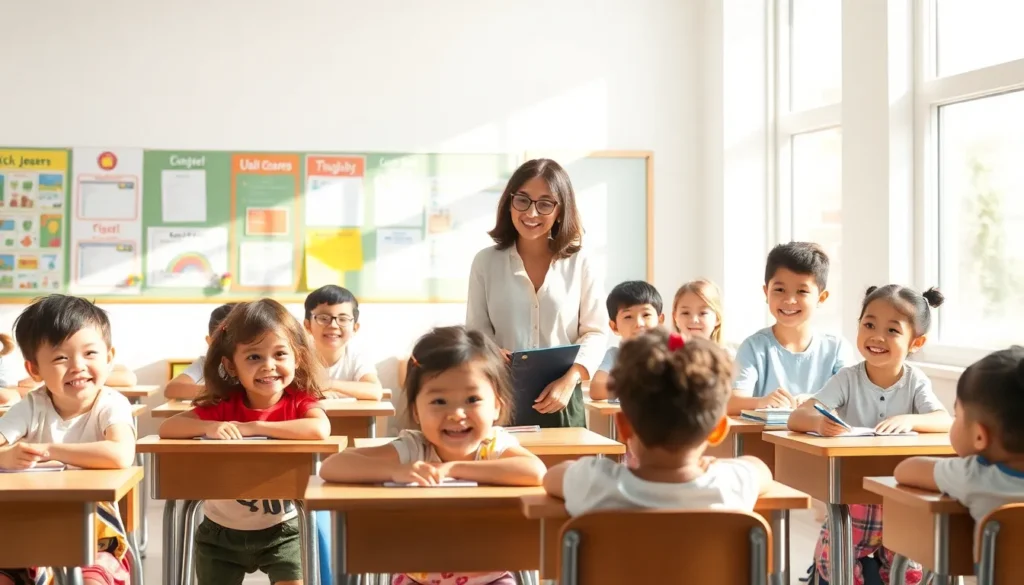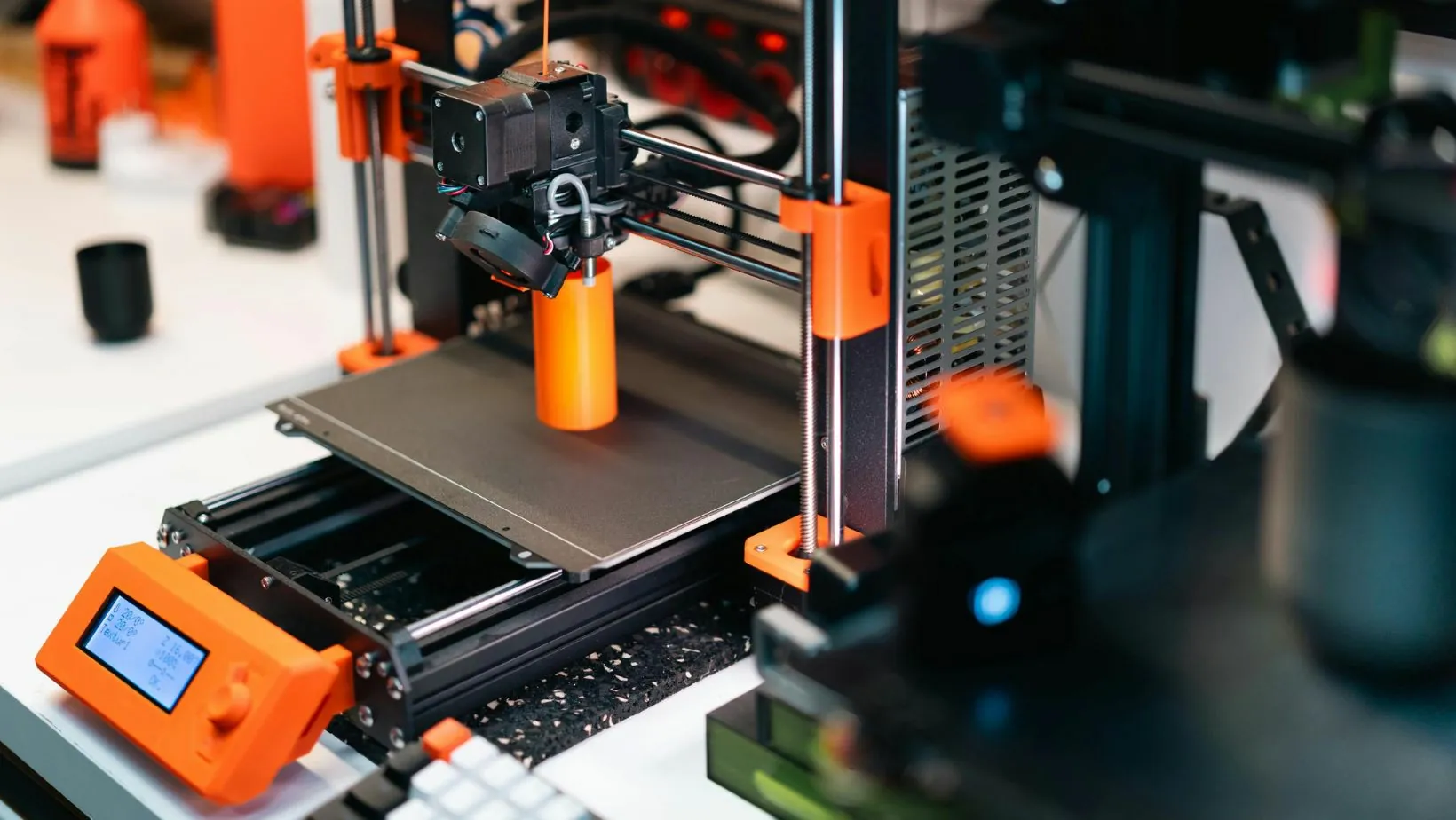Table of Contents
ToggleIn a world where knowledge is power, the quest for education access can feel like trying to find a unicorn in a haystack. Everyone deserves a shot at learning, yet millions still face barriers that make this quest a daunting challenge. It’s time to shine a spotlight on the importance of breaking down these barriers and ensuring that education is as accessible as a cat video on the internet.
Imagine a future where every child, regardless of their background, can walk into a classroom and feel empowered to learn. That’s not just a dream; it’s a necessity. When access to education improves, society flourishes, and who wouldn’t want to live in a world filled with educated minds ready to tackle the big issues? Let’s dive into the importance of education access and explore how it can transform lives and communities for the better.
Overview of Education Access
Access to education remains a fundamental human right. Millions lack the resources required to pursue learning effectively. Barriers such as poverty, geographical location, and systemic inequality often hinder progress.
In many regions, girls face additional challenges that limit their educational opportunities. Societal norms sometimes dictate which children attend school. Limited infrastructure, including inadequate school facilities and lack of transportation, exacerbates this issue, affecting engagement and retention.
Statistics indicate that over 260 million children worldwide are out of school. Such figures highlight the urgency of addressing these disparities. Organizations, governments, and communities are essential in creating more inclusive educational landscapes.
Technological advancements offer potential solutions. Online learning platforms and digital resources can bridge gaps, especially in rural or underserved areas. Increased investment in educational technology supports diverse learning needs and environments.
Improving access directly influences social and economic outcomes. Individuals with educational opportunities tend to experience better job prospects and higher earning potential. Communities benefit from educated citizens, leading to reduced poverty rates and enhanced civic participation.
Addressing education access involves collaboration among various stakeholders. Policymakers must prioritize equitable funding and policies aimed at removing obstacles. Nonprofits and community organizations play vital roles in outreach and support for marginalized groups.
Collective efforts centered on promoting education access contribute to breaking cycles of disadvantage. With focused attention, societies can transform their educational landscape, paving the way for a more equitable future.
Importance of Education Access

Access to education serves as a cornerstone for individual and societal advancement. Improving education access directly correlates with economic and social benefits for communities.
Economic Impact
Education access promotes economic growth. Higher education levels typically result in increased earning potential. Individuals with adequate education contribute to a more skilled workforce. Increased employment rates lead to reduced poverty across populations. Data indicates that every additional year of schooling can raise a person’s income by up to 10%. Such financial growth stimulates local and national economies. Investment in education yields significant returns, benefiting families and communities alike.
Social Equality
Education access fosters social equality by leveling the playing field. Individuals from disadvantaged backgrounds gain opportunities to succeed. Ensuring equitable access helps break down systemic barriers. Girls facing societal challenges benefit significantly from increased educational opportunities. Data underscores that educated women are more likely to participate in the workforce and engage in civic activities. Education equips individuals with the skills needed to advocate for their rights and those of others. Ultimately, wider access contributes to a more equitable society.
Barriers to Education Access
Barriers to education access prevent millions from reaching their learning potential. Understanding these obstacles is crucial for creating effective solutions.
Geographical Barriers
Geographical barriers significantly hinder educational access. Remote areas often lack necessary infrastructure, including schools and transportation. In rural regions, children may travel long distances to reach educational institutions, discouraging attendance. Mountainous or isolated terrains intensify these challenges, further distancing students from educational resources. Many low-income families, particularly in underdeveloped nations, face these geographical constraints. Data indicates that children in rural settings are less likely to complete their education than their urban counterparts. Addressing these disparities can foster equitable access to learning for all.
Socioeconomic Factors
Socioeconomic factors create additional layers of difficulty for education access. Families struggling with poverty frequently prioritize basic needs, such as food and shelter, over educational expenses. School fees, uniforms, and supplies burden low-income households, leading to high dropout rates. Furthermore, children from disadvantaged backgrounds often lack the support needed for academic success, such as tutoring or parental guidance. Studies reveal that students from wealthier families consistently outperform those from lower-income households. Targeting socioeconomic barriers can enhance educational opportunities and improve outcomes for marginalized groups.
Policy and Legislative Challenges
Policy and legislative challenges undermine efforts to establish equitable access to education. In many regions, existing laws may fail to prioritize funding for underserved communities, perpetuating cycles of inequality. Insufficient legislation can leave gaps in support for vulnerable populations, including girls and children with disabilities. Policymakers often encounter opposition when attempting to implement reforms that promote accessibility. Data shows that countries with comprehensive education policies experience higher enrollment rates and improved educational quality. Advocating for effective policies and reforms is essential for breaking down barriers and fostering inclusive learning environments.
Innovations to Enhance Education Access
Innovations play a significant role in improving access to education. They address barriers and foster an inclusive learning environment.
Technology in Education
Technology enhances educational access through various digital tools. Online learning platforms facilitate remote learning opportunities for millions. Mobile applications provide educational resources directly to students in underserved areas. Virtual classrooms allow learners to participate regardless of geographical constraints. Adaptive learning software tailors education to individual needs, supporting diverse learning styles. These solutions bridge the gap, ensuring all students have equal opportunities to succeed.
Community-Based Initiatives
Community-based initiatives create localized solutions for educational access. Local organizations often implement programs that target specific barriers in their regions. After-school programs offer additional support for students struggling with their studies. Mentorship opportunities connect students with role models, fostering personal growth and academic motivation. Parent engagement workshops educate families on available resources, encouraging their involvement. Such efforts enhance educational experiences, ultimately promoting equity in learning.
Global Perspectives on Education Access
Education access varies significantly across the globe, with stark contrasts between developing and developed nations. Emphasizing the need for tailored solutions, various examples highlight individuals’ resilience in overcoming barriers.
Case Studies from Developing Countries
In many developing countries, innovative approaches offer insights into improving education access. For instance, in Kenya, the introduction of mobile schools has improved literacy for nomadic communities. In India, non-profit organizations like Pratham successfully implemented a nationwide initiative that reached over 30 million children, fostering literacy and numeracy skills. Additionally, the use of community learning centers in rural Bangladesh provided a lifeline for girls, empowering them with education. These case studies demonstrate how targeted interventions can break down barriers and enhance access to education.
Success Stories from Developed Nations
Developed nations also showcase effective strategies for improving education access. In Finland, comprehensive education policies ensure free access to high-quality education for all citizens, resulting in consistently high performance in global rankings. Similarly, the United States has seen successful initiatives such as the Harlem Children’s Zone, which supports education and community resources for disadvantaged families. Canada’s commitment to inclusive education promotes equity in classrooms, accommodating diverse learners. These success stories underline the importance of strategic investments and policy frameworks in achieving education access.
Achieving education access for all remains an essential goal that requires persistent effort and innovative solutions. By addressing the barriers that hinder learning opportunities, society can unlock the potential of millions. The collective actions of governments, organizations, and communities can transform educational landscapes and ensure that every child, regardless of their background, has the chance to thrive.
Investing in education not only empowers individuals but also strengthens communities and economies. As the world moves forward, prioritizing inclusive education will be pivotal in creating a more equitable and prosperous future for everyone. The journey toward universal education access is challenging but undeniably worthwhile.



